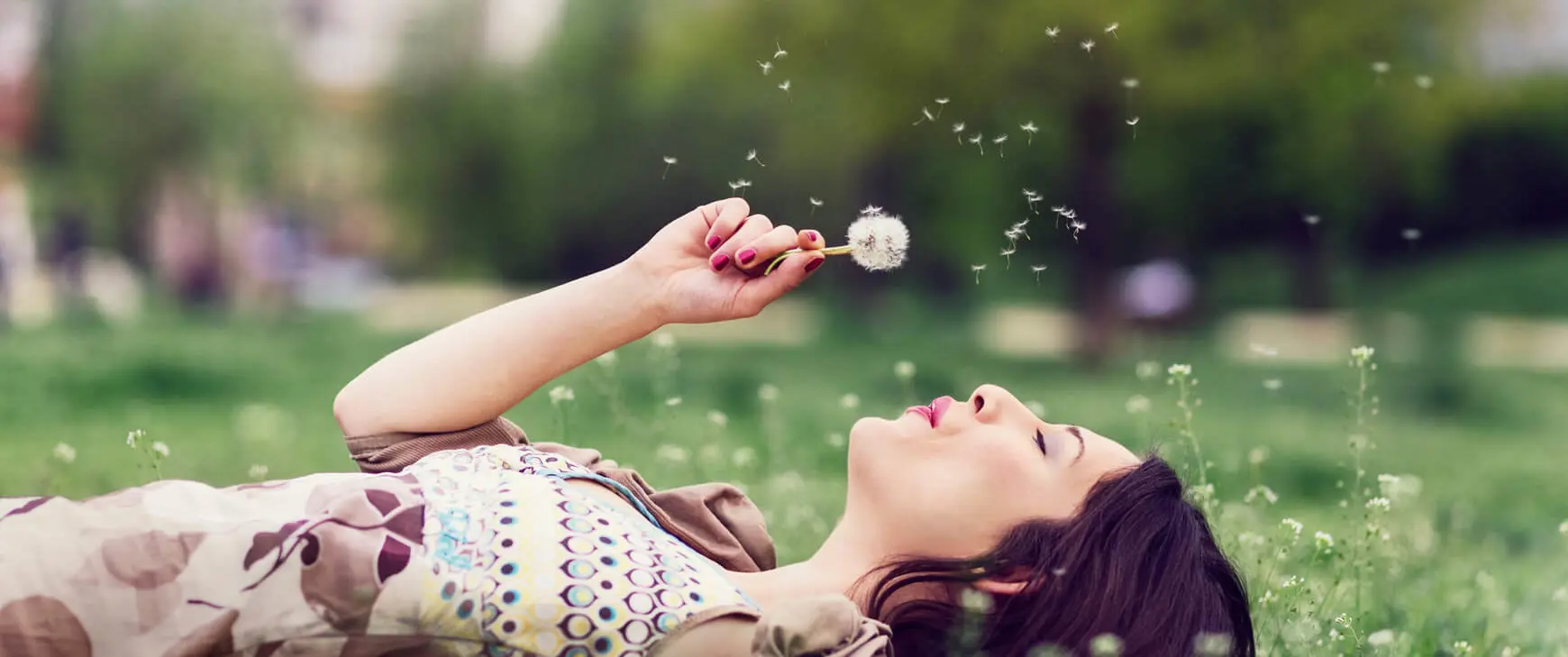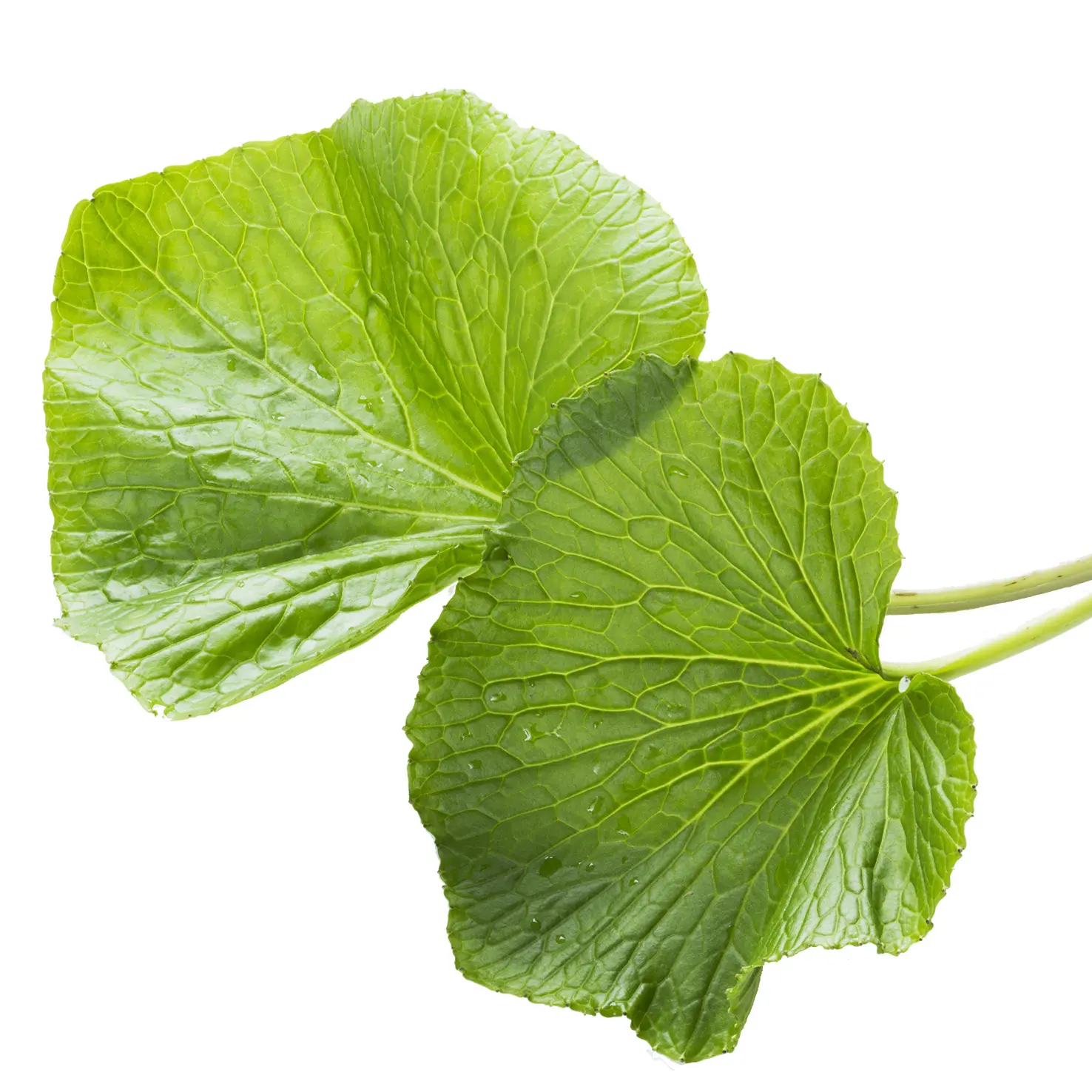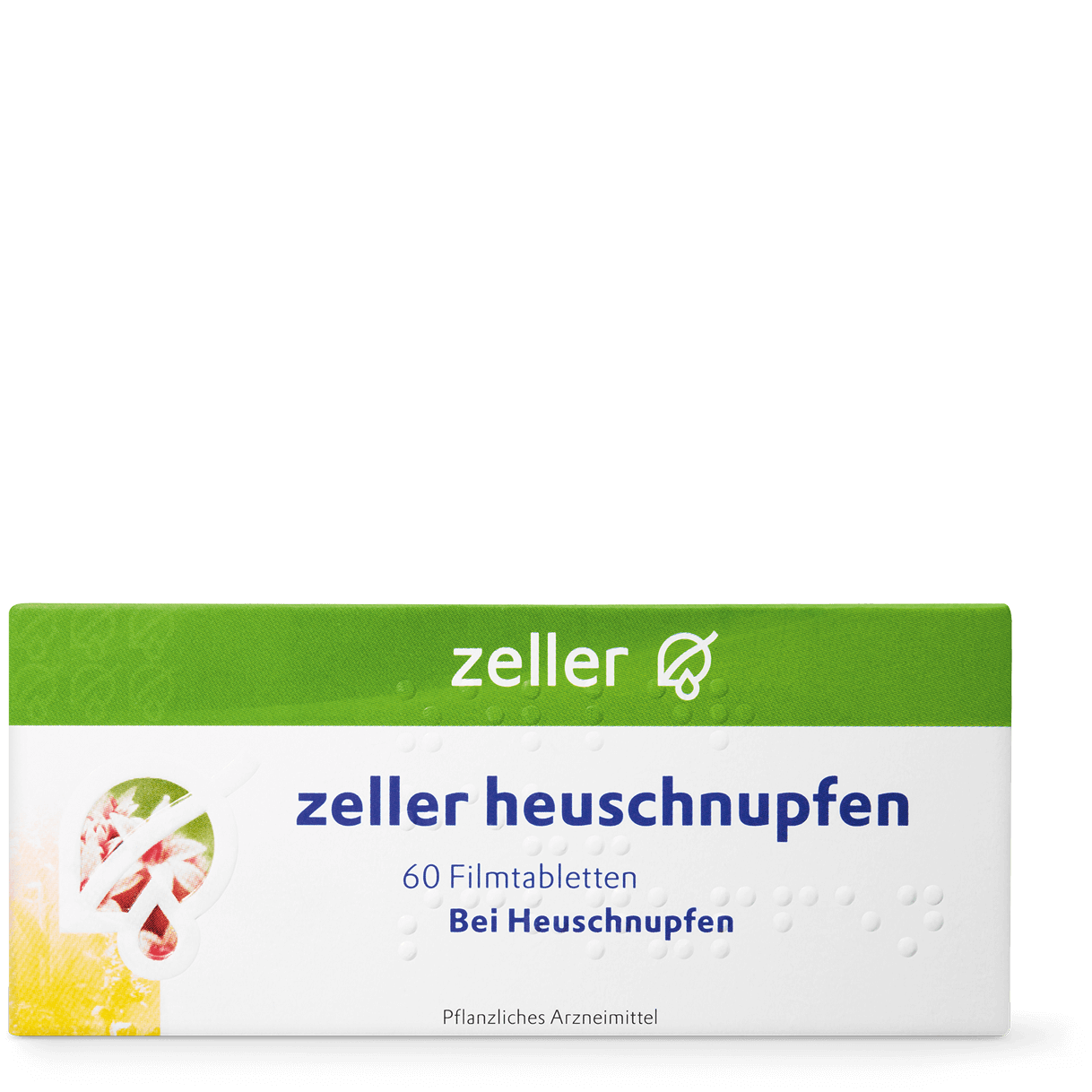
Hay fever
Allergies are becoming increasingly common – above all, to pollen (hay fever). The medicinal plant butterbur is a good alternative to synthetic antihistamines.
Hay fever, i.e. pollen allergy, usually occurs in spring, summer or late summer. The main symptom is allergic rhinitis, which manifests as sneezing or a runny or blocked nose, sometimes in conjunction with watery, itchy eyes. In extreme cases, the skin and the lungs can also be affected to the extent that the sufferer develops allergic asthma. Medication can alleviate acute symptoms. Hypo-sensitisation, or allergen immunotherapy, is effective in the long term; however, it is not effective for all those affected. Nature also offers a gentle remedy, for example in the form of the medicinal plant butterbur. Find out everything about the causes, symptoms and treatment of hay fever here.
What is hay fever?
An allergy is an over-sensitivity to particular substances from the environment, which are known as allergens. Contact with the allergen produces an excessive reaction in the immune system. An allergy to plant pollens is called hay fever (pollinosis, pollen allergy). It is also known as allergic rhinitis as the initial symptoms often resemble a cold. It is triggered by plant pollens, which is why hay fever only occurs during the flowering period of the corresponding plants. Depending on which trees, grasses or herbs that the allergy sufferer reacts to, hay fever can occur from February to October. The most significant triggers include the pollen from grasses, grains, some herbs and early-blossoming trees such as hazel, alder and birch.
Causes of hay fever
Why do some people react to allergens with an excessive immune reaction, but others not? To date, researchers have not been able to answer this question definitively. As the frequency of allergies has progressively increased over the last few centuries, environmental factors or life style almost certainly play a part. According to allergologists, the following can increase the likelihood of developing hay fever. A number of these triggers undoubtedly often interact.
Global warming/neophytes: More pollen and different types than in the past
Even the slightest change in the climate can alter the flowering period of native plants. It has been apparent for years that certain plants are flowering earlier or longer. There are also new types of pollen, i.e. neophytes, which are becoming more prevalent. One example is ambrosia (ragweed), which has an extremely high allergenic potential.
Hygiene hypothesis: Are we living too cleanly?
Researchers have been able to show that children who grow up on farms suffer less often from allergies, asthma and skin diseases. This is probably due to early contact with germs, which trains and stimulates the immune system. Our ancestors were also often affected by parasites and worms. Of course, it is wonderful that these times are over. However, scientists believe that a worm infestation trains the immune system and protects it from allergies.
Environment and life style increase the risk of allergies
Stress, insufficient exercise and an unbalanced diet can weaken the immune system and increase the likelihood of developing allergies. In our industrialised world, we come into contact with numerous poisons and allergens, be it in the form of exhaust fumes, cigarette smoke, alcohol, pesticides, dyes or cleaning products. This may also contribute to a higher risk of allergies. Allergy researchers at the well-known Helmhotz-Zentrum in Munich have discovered that fine dust from industry and car exhausts can adhere to pollen. This increases the severity of the allergic reaction.
Intestinal flora influences hay fever
Nowadays, an increasing number of scientists are researching intestinal flora. They have discovered the complex interactions with the whole body and the key role that the bacteria living in the intestine play in the immune system. In one study, probiotics that were administered to support the intestinal flora were shown to reduce the symptoms of allergic rhinitis in some patients.
Hay fever symptoms
Skin and mucous membranes protect the body from foreign bodies and germs. They also form the initial barrier against pollen, which is why they are affected the most by allergic reactions. Hay fever often initially manifests as cold like symptoms such as a running or blocked nose, itching in the nose and irritated nasal mucosa. This is known as rhinitis or allergic rhinitis (also: rhinitis allergica). Sneezing fits, a permanently runny nose and severely affected nasal breathing are also possible. Patients also often suffer from reddened, burning, itchy or watery eyes, the sensation of having a foreign body in the eye, or itching or burning in the gums, pharynx or throat. Moreover, allergic rhinitis can cause inflammation in the ears or sinus cavities. Pollen can also invade the body via the skin and cause symptoms such as redness, itching or urticaria (hives). Children, infants and babies sometimes suffer from atopic dermatitis as a consequence of hay fever.
If a patient with allergic rhinitis also develops a cough or has difficulty in breathing, they should seek medical advice. In certain circumstances, progression to lower respiratory tract infections can occur. This means that the allergic reaction spreads to the bronchi. Allergic asthma can result from this. Patients who are allergic to pollen should also be aware that cross-reactivity with foodstuffs may occur. Thus, people with an allergy to birch pollen have a higher risk of developing an allergy to fruits such as apples and cherries, or to particular types of vegetables and nuts.
Who is affected by hay fever?
The number of allergy sufferers has increased in the last few years. Nowadays around every third person in Central Europe suffers from allergies. Women are also more frequently affected than men. An increasing number of children and infants have allergic illnesses.
More than half of all people with allergies have hay fever, which makes it the most common type of allergy in developed countries. Surveys in Switzerland have revealed that 15 to 20 per cent of adults are affected by an excessive reaction to pollen. Around one in three will develop allergic asthma during their lifetime.
Treating allergic rhinitis
It is often difficult to treat allergies. The effects of the disease itself can sometimes be reduced, or even eliminated completely, with treatments such as hypo-sensitisation. In all other cases, the symptoms can usually only be alleviated by synthetic or herbal remedies. An allergy should be diagnosed by a doctor, for example by using a skin prick test, before taking medication. Hay fever symptoms accompanied by a cough, difficulty in breathing or pain in the lungs should always be clarified by a doctor and not self-treated.
Herbal remedies for hay fever
The medicinal plant butterbur (Petasites hybridus) is an alternative to synthetic chemical hay fever medication. The ingredients of butterbur, in particular petasines, prevent the release of various inflammatory mediators and the formation of leukotrienes. These messenger substances of the body play an important role when allergic complaints occur, as some can alleviate symptoms such as rhinitis, irritations in the pharynx or reddened eyes.
Hyposensitisation
Specific immune therapy (SIT), also known as hypo-sensitisation, an be used in the event of allergic rhinitis and is designed to accustom the sufferer to the specific allergen. It can be taken in the form of injections. Nowadays it is often performed as sublingual immune treatment (SLIT), in which a solution or quick-dissolving tablet is administered under the tongue. It is a long-term treatment, but its effectiveness can vary from patient to patient. It is particularly successful for a grass pollen allergy.
Hay fever medication
Hay fever medication is designed to weaken the allergic reaction. This can be done topically in the form of eye drops and nasal sprays, which work directly on the site of the rhinitis or on itchy eyes. Taking antihistamines can often help patients with severe pollen allergies. In severe cases, the doctor can prescribe medication with cortisone. If allergy-induced asthma also occurs, additional specific asthma medication can be prescribed in certain circumstances.
Tips: Alleviate hay fever without medication
The following tips can be of some help in reducing the severity of the symptoms parallel to or in lieu of medical treatment. This also applies to children for whom medication is a less than ideal solution.
- Pay attention to pollen forecasts and move your sporting activities inside in the event of an expected severe pollen exposure.
- A pollen filter in your car and in your vacuum cleaner can reduce the pollen load. In this way, the symptoms of rhinitis can be alleviated and allergy-induced attacks prevented.
- Air your house at the right time: The pollen load in cities is at its lowest in the mornings; in rural areas, the evenings.
- Pollen attaches itself to your hair and clothing when you are outside. You are strongly advised to change your clothing and wash your hair when symptoms occur.
- Where possible, plan excursions and holidays in areas where lower pollen levels are expected.
- Acute symptoms of allergic rhinitis with a runny nose can sometimes be alleviated by rinsing your nose with isotonic saline solution. This rinses the pollen from the nasal mucosa. You can rinse your eyes with clear water after contact with pollen.



